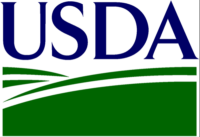The World Trade Organization (WTO) has ruled for a fourth time against the U.S. in regards to mandatory country-of-origin meat labeling, citing that such labeling puts countries like Canada and Mexico at a disadvantage.
Since 2009, U.S. meat labels for packages of beef, pork and other meat items sold in retailers have displayed a few pieces of crucial information:
- where the animals are born, raised and ultimately slaughtered
- whether or not any of those steps occurred in different countries
Supporters of meat labeling--largely consumers and U.S. ranchers--support these labeling efforts simply for one reason--people should know exactly where their food is coming from. While many people assume that supporters want labeling because of assumed health risks stemming from imported foods, that is not the case. Rep. Mike Conaway (R-Texas), chairman of the House Agriculture Committee, says that the labeling law “has absolutely nothing to do with food safety--it’s a marketing issue,”
Some countries believe that labeling puts their livestock at a disadvantage because U.S. meatpackers would rather not deal with the extra labor and added costs associated with tracking imported animals such as cows and pigs. Overall, the WTO’s latest ruling against the U.S. could open doors for other countries to also claim an unfair disadvantage on the livestock import and meat labeling front. Canada has already hinted at restricting the trade of various U.S. products--both food and non-food items--if mandatory country-of-origin meat labeling ever sees the light of day.
Last year, the Agriculture Department submitted a report to Congress stating that the costs of country-of-origin labels would outweigh the advantages. The report also hinted that there's no guarantee that consumers will even care about new labeling.
According to agriculture secretary Tom Vilsack, his department has run out of ideas and the onus is now on Congress to figure out whether to do away with mandatory labeling, or enforce it and suffer whatever consequences might follow. A third option would be to label meat from Canada and Mexico as products of North America, which--geographically speaking--is true.





